Dogs
20 Most Dangerous Dog Breeds On The Planet – Check Them Out!
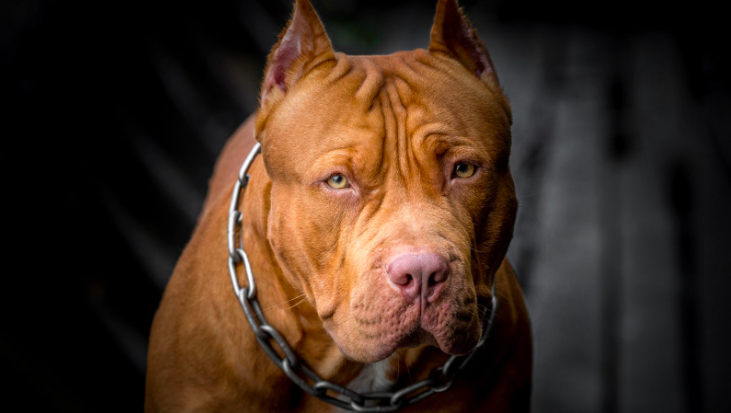
20 Most Dangerous Dog Breeds On the Planet – Check Them Out!!
It’s difficult to conclude that there are specific breeds of dogs that are particularly dangerous to humans. Dogs develop in different ways depending on how they are raised, how they are treated, and the environment in which they live.
Having said that, some dog breeds are more prone to violent behavior than others, and this is true for both males and females. This does mean that these breeds will develop into aggressive dogs with a mean streak in their personalities.
The only thing it signifies is that if they are not properly cared for, they are more likely to become aggressive than other dog breeds. The dogs on this list could be loving, happy family pets if they are raised in the proper environment.
Having said that, the Journal of the American Veterinary Association (JAVMA) undertook a study over a period of 20 years to establish which breeds were the most deadly based on the number of fatalities caused by dog bites.
The majority of the canines on this list were also discovered in the study’s final results, which confirmed the list’s validity.
20) Labrador.
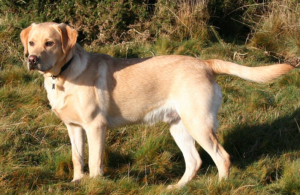
The Labrador Retriever is typically considered to be a friendly, easygoing, and affectionate dog. They can be quite dangerous if they are not properly educated and cared for, as with many rescue dogs.
According to the report of Merritt Clifton Dog Bite Statistics, there were 56 assaults that resulted in serious harm between 1982 and 2014, according to the organization. Seventeen of those individuals were minors.
It is also worth observing that this breed is responsible for one death during this period. In 2011, a Labrador mauled a three-year-old boy, resulting in severe facial injuries that required hospitalization.
The owner’s job is to ensure that their dog is loved, properly trained, and well cared for, just as with any other breed of dog. A lethal attack can be avoided if proper precautions are taken.
19) Cocker Spaniel.
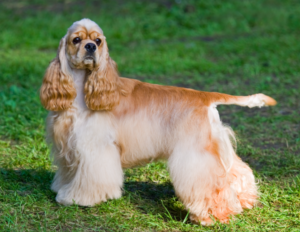
It could come as a surprise to learn that this dog actually belongs on this list. At first look, and if he is properly taught and cared for, he appears to be a wonderful and beloved family pet. These dogs, on the other hand, are extremely emotional.
As a result, badly trained dogs have a predisposition to attack. A survey conducted by the Japanese Veterinary Medical Association found that the Cocker Spaniel has been involved in more than 59 fatal assaults in the last 25 years.
In 2016, a group of stray dogs assaulted an older adult in Jacksonville, Florida, with at least one of the dogs being identified as a Cocker Spaniel. The attack took place in the early morning hours. The man was unable to make it.
18) Tosa Inu.
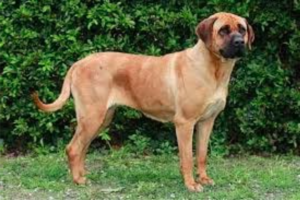
A fighting dog is an extremely dangerous breed of dog, and it is well-known for being so. It is also an extremely rare breed of dog. It has been outlawed in various nations due to the danger it poses, including the United Kingdom, New Zealand, Denmark, Norway, Hong Kong, Australia, and several other jurisdictions.
The rise in the number of attacks on people, particularly youngsters, was cited as the basis for the prohibition. In the early 1990s, the number of attacks reached thousands per year.
According to the ASPCA, only one assault by this breed has occurred in the last three years since the breed has been prohibited from being owned and since there are nearly no breeders remaining in the world.
17) The Bullmastiff.
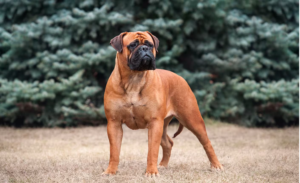
The Bullmastiff is a huge, powerful dog with a lot of muscle. He is capable of weighing up to 130 pounds and standing as tall as 27 inches, depending on his size. Unless these dogs are properly trained and socialized, they have the potential to become violent.
Dogs that have not been properly trained might become quite unpredictable. During an attack by a Bullmastiff in 2014, a 13-year-old kid from New Jersey was killed after being bitten by the dog.
Another youngster was also attacked, and he had serious injuries as a result. Over a 15-year period, according to the Merritt Cliffton Dog Bite Statistics, there were 111 assaults on people by dogs.
About 46 of the victims were minors, with 63 of the attacks resulting in fatalities. On the other hand, these dogs can become terrific family companions if they are given the necessary care and training.
16) Malamute.
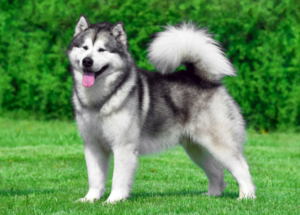
The Malamute is frequently misidentified as the Husky. These dogs are extremely huge, weighing up to 85 pounds at their heaviest. These dogs have a tendency to be passive, which makes them good working dogs.
The Malamute, like the Husky, is well-known for its ability to pull sleds through the bitter cold. They are large, making them an unsuitable companion for families with young children.
According to the findings of the JAVMA study, this breed was responsible for 12 fatal assaults over the course of 20 years. When the family’s Malamute killed a woman’s six-month-old daughter, it made national news in the United Kingdom.
Meanwhile, in Cornwall, UK, a man was walking his Malamute when a “pit bull-like” dog started attacking him, and his dog saved his life by biting the attacking dog.
15) Saint Bernard.
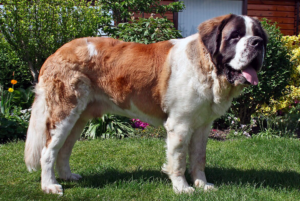
Because of the Beethoven films, you may have an image of a Saint Bernard as a family pet who is intelligent, protective, and affectionate to its owners. This is, in fact, correct.
Hikers who become stuck in the icy mountains have come to rely on this kind of dog, which originated in Italy and Switzerland and has become well-known for its capacity to rescue them.
While these dogs can be affectionate and protective, they can also be aggressive and possessive of their territory. Suppose you want to prevent your Saint Bernard from growing up and developing territorial and aggressive behavior.
In that case, you must begin socializing with him with strangers and other animals as soon as possible. As long as this breed is properly trained, he has the potential to be a wonderful companion. Because of his size and ferocity, he can be quite deadly if he isn’t restrained.
This breed’s average weight ranges between 140 and 260 pounds on average. The heaviest can weigh more than 310 pounds. If this dog is trained to be violent, it has the potential to cause significant damage, especially considering its large size.
During the 20-year study period, just seven people died as a result of a St. Bernard assault, according to the Journal of the American Veterinary Medical Association.
Many attacks go unreported, and the number of attacks is likely to be substantially higher.
In July 2016, a Canadian woman was strolling near a bus stop when a Saint Bernard on a leash lunged at her unawares and bit her face.
The victim of the dog said the attack was unprovoked, and she suffered a significant amount of blood loss as a result. Her kneecap was damaged, and she required 40 stitches to repair it.
However, it was difficult for the owner to take him away from the victim because of the dog’s size and power. However, it is not known what type of family life Saint Bernard had.
14) The American Bulldog.
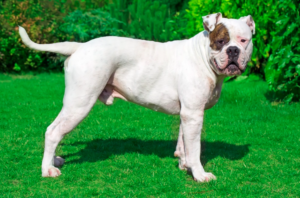
An extremely robust and stocky breed of dog, the American Bulldog is a great companion. He can weigh anywhere between 60 and 120 pounds, which means he has a lot of muscle and can put forth a lot of power with his strong frame.
A farm dog at heart, his initial training was designed to assist his master in catching, holding, and releasing cows as well as wild boar. He would also exterminate any pests that attempted to take over the land, and he would protect his master’s possessions and belongings. He is now more of a member of the family.
He will be sociable, just like any other dog, if he is properly trained. Though he is an extremely confident dog, he may be stubborn sometimes. He also has a strong emotional side that shows up occasionally. As long as you can train him to stop acting in this manner at a young age, he will make a loving and pleasant companion.
During the summer of 2016, a 3-year-old boy from Halstead, Essex, was mauled by an American Bull Dog. Although the youngster did not survive, his owner was imprisoned for letting his dog become dangerously out of control.
On the other hand, in May 2012, an American Bull Dog saved the lives of a woman and her sleeping baby after an intruder broke into their home. After successfully holding off an assailant until the police arrived, an American Bull Dog saved the lives of an entire family in 2015.
13) The Great Dane.
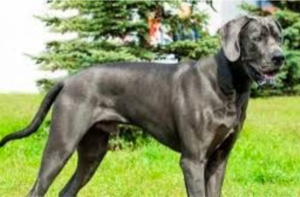
The Great Dane is a formidable canine opponent with its massive size and muscular frame. To be more specific, he holds the world record for being the tallest dog on the planet, standing at 44 inches in height.
Originally, he was raised to hunt deer and wild boar, and he continues to do so in his current position. Being a hunter has evolved into a hereditary trait in this dog’s genetic makeup over time, and it is now a heritable trait.
The Great Dane may make an outstanding family dog if socialized and trained properly from a young age. Most of these dogs are loving toward children, and many will allow small children to ride on their backs, similar to how horses do with their riders.
However, if these dogs are not socialized and taught properly, their enormous size can make them exceedingly dangerous.
For example, if the dog becomes aggressive while dragging his entire height and weight of up to 120 pounds behind him, you could be in for a very scary situation.
These dogs will make wonderful family pets if they get the love, attention, and training they need. According to a JAVMA Veterinary Medical Association survey, about 7 Great Danes died between 1978 and 1998.
12) Akita.
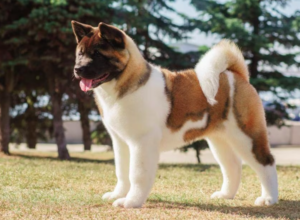
The Akita is said to have originated in the highlands of Japan. He is a breed that is extremely powerful, domineering, and self-sufficient. When properly socialized and taught, these dogs may be extremely affectionate and well-behaved companions.
On the other hand, they can be quite territorial and uncomfortable around strangers. He is a large and powerful dog, capable of weighing up to 100 pounds at times. When you consider his size and territorial nature, he may be extremely deadly if he is not properly trained and cared for.
It has been reported that between 1978 and 2008, there were 70 Akitas that caused bodily harm, with 44 of them being youngsters, according to the Clifton Study, a study that looked into dog bite events.
During this period, eight Akita were killed, and 52 people were permanently disabled. It was reported in 2015 that an Akita attacked and killed a woman.
When she checked on the Akita’s puppies, she was mauled by one of the dogs. Eight procedures were required to fix the damage.
In June 2014, an Akita who had been properly trained saved the life of his 5-year-old owner from being attacked by a bear. These anecdotes only serve to demonstrate that these dogs may be both deadly and heroic at the same time.
11) Boxer.
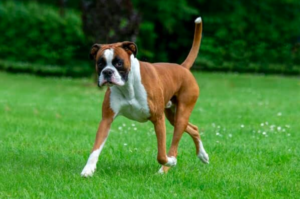
The Boxer is not known for being violent. He is a highly fun, intelligent, and active dog who is always up for a game. He also has a strong sense of independence. There have been 48 assaults involving this breed of dog between 1982 and 2012, which is the reason why they are considered dangerous.
According to the Clifton Study, 19 of those attacked were minors, and seven of them died because of the attack. He is extremely muscular and can weigh up to 70 pounds at his peak. This includes a toddler who was assaulted by the family’s 50-pound Boxer and suffered major injuries as a result of the incident.
Some people thought that the dog in question had not been properly trained. These dogs have the potential to be heroic if they are properly taught and cared for. A house in Goshen Township was destroyed by fire. The owner was saved from the fire by the family’s Boxer, who did so at the expense of his own life.
While he did heal from his injuries, he was forced to battle for his life throughout the process. These dogs can be nice, loyal, and even heroic when given the proper training and environment.
10) Wolf Hybrid.
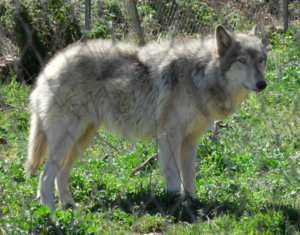
Dog and wolf hybrids exist, and the Wolf Hybrid is one such cross-breed. Because of the wolf’s genetic makeup, these dogs can be quite unpredictable in their behavior. Some of these dogs have more characteristics of a dog, while others exhibit those of a wolf.
Some of these dogs are extremely non-aggressive and gentle, while others are more aggressive. Unfortunately, a higher percentage of these dogs will be dangerous and likely to attack humans and small animals.
According to the JAVMA research, 14 people died, and 364 were attacked. Because some dog bite cases are not recorded, it is possible that the real number of attacks is underestimated.
In May 2013, a local Wolf Hybrid attacked and severely injured a 5-year-old boy, resulting in critical injuries. In 2009, a Wold Hybrid removed a sleeping infant from his crib, resulting in the baby’s death.
Many people held the dog responsible, even though he was part wolf. Others accused the dog’s owners of failing to train their pets properly. This dog is the only dog on this list that possesses the genetic composition of a wild animal, and as a result, he can turn violent and dangerous even in the best of circumstances.
Despite their bad image, there have been instances in which Wolf Hybrids have acted as heroes. When a couple who owned a Wolf Hybrid refuge became stranded outside during a storm in January 2014, and their Wolf Hybrid came to their aid, they were thrilled.
It took her two hours, but she managed to dig a tunnel that was 20 feet long, allowing the couple to return to their home safely. It’s impossible to predict what will happen with these dogs.
9) Chow Chow.
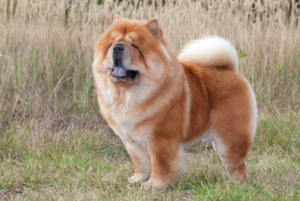
The Chow Chow is a well-known breed for being aloof and independent. He was originally from China, and he may weigh up to 70 pounds at his peak condition. Many people consider this dog a very bad reputation and a high-risk companion animal.
This is because there have been more than 238 Chow Chow attacks between 1979 and 1998. Thirty-seven of the victims of such attacks were youngsters, and 40 of them died as a result of the attacks.
Despite the fact that they are frequently extremely protective of their owners, they can be hazardous to others if they do not have the proper training and do not live in the proper environment.
Many states deem this breed “unacceptable” and therefore mandate that the owners carry specific insurance to cover any damage that these dogs can inflict.
Suppose they are unable to obtain the exercise they require and cannot be physically active due to a lack of available space. In that case, they can become aggressive and potentially hazardous to themselves and others.
Chow Chows risked their lives to demonstrate that these creatures are not without merit. Jared’s Chow Chow, Chow Chow, demonstrates this argument. He went on a family hike when a Black Bear attacked him and his companions. He saved the life of his sister and his human parents from the bear.
When the bear attempted to grab Jared’s owner’s belongings, Jared got on the bear’s back until the bear began to flee. The dog scared the bear away, allowing him to save his entire family from the animal.
8) Doberman Pinschers.
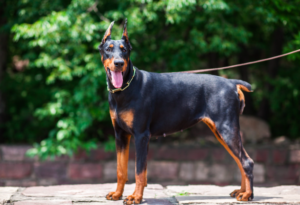
In every movie involving the mob or extremely wealthy and ruthless individuals, you will have seen a Doberman Pinscher at some point. These canines are frequently used as security dogs in movies, and they are eager to attack intruders if they are ordered to do so.
These canines are known for being exceedingly bright, incredibly devoted, and extremely attentive when it comes to the actual world. This is what distinguishes him as such a capable security dog. Despite his large size, he can weigh as much as 70 pounds and is hostile against strangers and other dogs.
They are only very rarely aggressive towards their owners, if at all. While these canines’ intelligence, size, and strength distinguish them from other dogs, they also make them so dangerous.
According to the JAVMA investigation, these dogs were responsible for nine fatalities, all of which occurred in the course of defending their owners’ lives. During a routine walk in his yard, an Oregon man was attacked by his neighbor’s Doberman Pinscher.
The attack occurred in March 2014. The dog was shot and killed by him. One year later, in October 2013, the Doberman Pinscher saved the life of a youngster who had been about to be attacked by an extremely dangerous poisonous snake while playing in the garden.
The dog was able to pick up the youngster and get her out of harm’s way in only a few short minutes after being called. If given the necessary care and attention, the Doberman may be educated to be a nice, joyful, and loyal dog, and he will be.
7) The Husky.
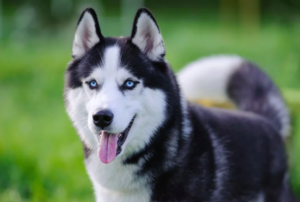
The Husky can be hazardous to humans, but they can be especially dangerous to smaller animals, which makes them a particularly dangerous breed. They are large, powerful dogs who are bred to pull sleds over the snow, which they excel at.
The fact that they have such a strong predator drive might make them potentially hazardous at times. It has been determined by the National Association of Dog Bite Statistics that the Husky has been responsible for fifteen fatalities in the last 15 years.
On the other hand, you could bring a smaller animal into your home if you received sufficient training. In addition to being deadly to living things, these canines can also be quite disruptive in your home.
If your husky becomes bored while you are away, you may return home to furniture that has been chewed up and a major mess.
6) The Rottweiler.
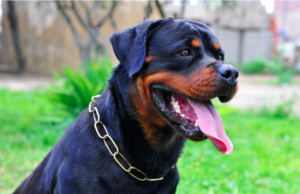
The Rottweiler is a very large and powerful dog. They are capable of weighing up to 130 pounds, and the majority of them are made entirely of muscle. It is believed that this dog is extremely dangerous due to his hereditary propensity to guard and herd large flocks of sheep and cattle.
Not every one of these dogs is a ferocious beast. These dogs have earned a negative image, similar to many other breeds, because of abuse, neglect, lack of socialization, lack of training, and being cared for by irresponsible owners.
According to the report of Merritt Clifton Dog Bite Statistics, it has been estimated that the Rottweiler caused, between 1982 and 2014, 535 dog attacks. Of those attacks, 297 of the attack victims were children, and 85 of the attacks were fatal, according to the National Crime Prevention Center.
It was 2015 when a man in Jackson Madison County, Tennessee, adopted a Rottweiler who attacked and killed him three hours later, according to police. Others believe that the manner he was treated before his adoption was the catalyst for the attack.
The year was 2001, and a woman in Rhode Island was arguing with her ex-boyfriend when her next-door neighbor came to check what was going on. When the dog heard the screams, he grabbed the woman’s rear end and threw her and the dog down the steps together.
The dog’s owner had to rip the woman’s teeth away from the dog’s teeth in order to assist her in escaping. The year was 2015, and a woman named Kasha Weston was five months pregnant when a group of armed men barged into her home brandishing knives. Her Rottweiler came to her aid and launched an attack on the intruders.
Three of the men were able to escape from the house, while the dog restrained the fourth until the police arrived on the scene. This demonstrates that, even though these dogs might be dangerous, they can also be extremely heroic.
5) German Shepherd.
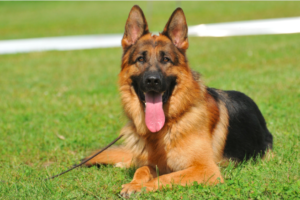
The vast majority of these dogs are friendly. They are astute, vigilant, alert, and fearless in their actions. These canines are frequently employed in police K-9 units due to their outstanding characteristics.
While these dogs make wonderful family pets, they must be socialized and trained from a young age in order to be successful. When they feel threatened, they can become fiercely protective of their owners, families, and homes. As a result, they can be quite harmful.
If a pleasant stranger enters the house, a German Shepherd who has not been properly educated may attack the visitor. As a result, they can be quite harmful. If a stranger enters the house with the intent of causing harm, these dogs will attack him as well.
In general, if these dogs are not properly trained, they can be extremely dangerous. A study conducted by the JAVWA found that the German Shepherd was responsible for a number of fatalities.
The vast majority of these fatalities occurred when the dog attempted to protect a member of his family from harm. They may weigh up to 100 pounds, which provides them with a significant amount of punching power when attacking.
4) Caucasian Ovcharka.
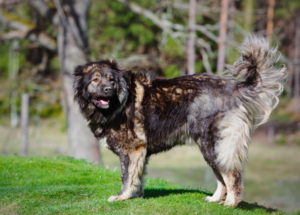
It was raised to protect cattle, which is why it is also known as the Caucasian Shepherd. They have a strong sense of self-determination, assertiveness, and courage. When a dog has been properly trained, these can be excellent characteristics.
These dogs can become highly vicious and difficult to control if this is not done. An uncontrolled impulse to defend their house and the people who live in it consumes them.
If a stranger enters the house and the dog does not recognize them, he may become aggressive. Because he is such a massive and powerful dog, it might be difficult for an owner to dissuade him from attacking once he has started.
The protective instincts of the Caucasian Shepherd have also been known to save lives in the past. He could weigh up to 110 pounds, and he will utilize this weight to save the lives of the people he cares about the most.
This dog was responsible for 24 fatalities between 2004 and 2014, according to the information given by Animals 24-7.
There were no children among those who died in the horrific strikes on the Twin Towers. Then properly cared for and trained, this dog can make an excellent family dog who is protective, loyal, and devoted.
3) The Bull Terrier.
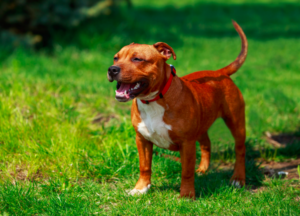
The Bull Terrier’s large, egg-shaped head is the breed’s most distinguishing characteristic. He is also well-known for having an incredibly muscular physique. These dogs have received a bad reputation in the past because they have been mistreated, abused, and trained to attack.
These canines are not technically hazardous to humans but can be dangerous to other dogs and animals, particularly smaller dogs and animals. This is due to the fact that they have a strong desire to chase their prey. If they cannot suppress this drive, they may become violent toward these smaller creatures, inflicting considerable injury when they do so.
This breed may reach a maximum weight of 65 pounds and is swift and tough. A well-trained, well-loved, well-cared-for dog can make an excellent family companion, even in households with other small animals.
2) Gull Dong.
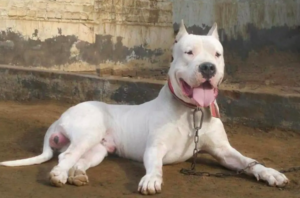
The Gull Dong is a hybrid of two different breeds of dogs: the Bully Kutta and the Gull Tarrier. These dogs have the honor of being very strong and extremely powerful. The breed was developed to fight, and it is well-known for being tough to handle and extremely violent.
If you desire to get one of these dogs, you need to start training him at an early age with a professional trainer. He can weigh as much as 140 pounds, which is a significant weight to bear and attack with.
National Dog Bite Statistics reports that 68 documented dog attacks occurred between 2005 and 2011, with the most recent assault in 2010. Eight of these attacks resulted in death. If these dogs are properly educated and socialized from an early age, they can grow up to be extremely affectionate, devoted, and ferociously protective.
Even though these dogs are well-known for their aggression and desire to attack, they are also well-known for protecting the people they care about and saving their owners’ lives.
1) Pit Bull.
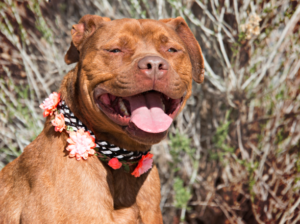
The Pit Bull is widely and popularly regarded as the most dangerous dog in the United States. Pit Bull’s mauling has claimed the lives of 203 persons in the United States between 2005 and 2014, with 305 people suffering serious injuries.
Originally, these dogs were bred for baiting bulls and protecting hunters from bears. Despite their small size, these dogs are extremely muscular. The majority of Pit Bulls are lean and have no excess fat on their bodies.
They are made entirely of muscle. These pups are rather adorable; unfortunately, many Pit Bull owners choose to change the dog’s appearance to give him a mean and intimidating appearance.
This contributes to the widespread fear of these dogs among the general public. The other reason is how the dogs are treated by their owners. In the world today, there are many immoral criminals that train these canines to fight against one another for monetary gain.
They starve, beat, and torture them to teach them properly. It is one of the most terrible crimes against humanity that can be imagined. According to the American Society for the Prevention of Cruelty to Animals, approximately 1,000 dogfighting arrests were being made in the United States between 2003 and 2008.
Former NFL player, Michael Vick, was arrested and sentenced to prison for involvement in a dogfighting ring. Drug dealers abuse these dogs in order to train them to protect their drugs, guns, and money with their very lives.
The negative reputation that Pit Bulls have acquired due to all of these factors is not necessarily deserved. These canines have been known to attack, yet they have also been known to save lives when they are called upon.
n August 2016, a woman from Georgia was stabbed in the stomach by a man with a knife. Then a stray Pit Bull attacked the man, and the dog leaped at him, scaring him away, but the man was stabbed five times before fleeing.
This dog was able to save the life of a woman he didn’t even know was there to save him. The dog recovered completely, and the woman ultimately decided to adopt him. Some dogs are deemed dangerous because of their size, while others are deemed dangerous because of their genetic makeup or disposition.
The way they were raised and treated has earned them a reputation as potentially dangerous individuals. Most dogs may be good, loving, and loyal companions if given enough affection, sufficient supervision, and proper training.
We appreciate you taking the time to read!
Finally, we hope you found this article interesting? And what do you think about ”20 Most Dangerous Dog Breeds on The Planet – Check Them Out!?”
Please get in touch with us if you would like to contribute to this article or advertise.
And let us know if you notice something that isn’t quite right.
Dogs
The Touching Story Behind Why a Dog Lays on a Particular Spot in the Yard

The Touching Story Behind Why a Dog Lays on a Particular Spot in the Yard: A Tale of Unbreakable Loyalty
Dogs are known for their incredible loyalty, but sometimes their devotion to those they love can manifest in heart-wrenching ways. This is the case with one dog whose habit of laying on a specific spot in the yard has left many people in tears. What may appear to be a simple, everyday action carries with it a deeper, heartbreaking reason that has moved dog lovers and pet owners alike.
In this article, we will delve into the emotional backstory of why this dog chooses that special spot and what it reveals about the profound bond between pets and their owners.
The Unbreakable Bond Between Humans and Dogs
Dogs have long been known as “man’s best friend.” Their unwavering loyalty and companionship can turn them into integral parts of our families. They sense our emotions, offer comfort in times of need, and provide joy and laughter. The bond between humans and dogs is unique, and for many, their pet becomes more than just an animal — they are family.
Why Do Dogs Form Such Strong Attachments?
One of the reasons dogs are so loyal is due to their pack mentality. In the wild, dogs live and hunt in packs, forming tight-knit social groups. When domesticated, they transfer this pack behavior to their human families. Dogs will go to great lengths to remain close to those they consider part of their pack, and when a member is lost, the dog often mourns deeply.
@talltaz The whole yard and he only lays on top of where we buried her 🥺😭 #petloss #grief #fyp
The Story of the Loyal Dog and the Special Spot in the Yard
In one particular case, a dog’s loyalty is demonstrated in an incredibly poignant way. After the passing of the dog’s owner, the pet began to exhibit unusual behavior — lying down on the same spot in the yard every single day. At first, the family thought it was just a comfortable place for the dog to rest, but they soon realized that the spot held a special significance.
The Meaning Behind the Spot
The spot where the dog lays is the same place where the owner used to spend time with the dog, sitting outside together, enjoying the fresh air and the sunshine. After the owner passed away, the dog returned to that spot daily, as if waiting for the person to return. The dog’s actions have been described as a form of mourning, a way of staying close to their beloved human even after they’ve gone.
How Pets Grieve the Loss of Their Owners
Just like humans, dogs can experience grief when they lose someone they love. The signs of grief in dogs can include changes in behavior, loss of appetite, and separation anxiety. In some cases, dogs may return to places that remind them of their owner, like the loyal dog who lays on that specific spot in the yard.
Signs of Grieving in Dogs
- Loss of Appetite: One of the most common signs of a grieving dog is a refusal to eat or a noticeable decrease in appetite.
- Withdrawal: A grieving dog may become less active or less interested in playing, choosing instead to lay in one place for long periods.
- Whining or Howling: Some dogs will vocalize their sadness through whines or howls, particularly when they are in a place that reminds them of their owner.
- Searching: It’s not uncommon for dogs to search the house or yard for their lost companion, wandering around or sniffing in places where their owner used to be.
The Science Behind Dogs and Grief
Research into canine behavior has shown that dogs are capable of feeling complex emotions, including grief. A study by the American Society for the Prevention of Cruelty to Animals (ASPCA) revealed that more than 60% of dogs exhibited signs of grief after the loss of a companion pet, and it’s reasonable to believe that they would react similarly after losing a human companion. The dog’s brain processes emotions in much the same way as the human brain, and they often form deep emotional bonds that are difficult to break.
How Dogs Cope With Loss
Dogs, much like humans, cope with loss in different ways. While some may exhibit signs of sadness or distress, others might become more clingy or protective of their remaining family members. Providing them with comfort, attention, and familiar routines can help them cope with their feelings of loss.
Helping a Grieving Dog
If your dog is showing signs of grief, it’s essential to provide them with support and understanding. They may need extra care and attention during this difficult time. Here are a few ways to help a grieving dog:
- Stick to a Routine: Keeping a regular routine can provide a sense of stability and security for your pet.
- Give Them Extra Attention: Spending more time with your dog, offering affection and comfort, can help ease their sadness.
- Offer Comforting Items: Items that smell like the deceased owner, such as clothing or bedding, may help the dog feel close to their lost companion.
A Dog’s Loyalty Knows No Bounds
The story of the dog lying on that specific spot in the yard is just one of many examples of how deeply dogs feel their connections to humans. It highlights the incredible loyalty that dogs have for their owners, even after death. Dogs don’t just offer companionship while we are alive; they continue to show their love and dedication long after we’re gone.
Other Heartwarming Stories of Canine Loyalty
This isn’t the only story of a dog displaying remarkable loyalty. There are countless stories of dogs who wait for their owners, return to places they once shared, or exhibit behaviors that suggest they are mourning the loss of their loved ones. One of the most famous examples is the story of Hachiko, the Japanese Akita who waited at a train station every day for nearly ten years after his owner’s death. Such stories remind us of the deep emotional lives of our pets and the bonds they form with us.
Conclusion
The heartbreaking story of the dog laying on a specific spot in the yard is a testament to the unbreakable bond between humans and their pets. It’s a reminder that dogs are not just pets; they are loyal, loving companions who feel loss and grief just as deeply as we do. For this particular dog, that spot in the yard is more than just a place to rest; it’s a symbol of the inseparable bond they shared with their owner.
Frequently Asked Questions (FAQs)
Why does my dog lay in a specific spot every day?
Dogs often return to places that have sentimental value, either due to memories they associate with the spot or because it reminds them of their owners. In some cases, a dog may lay in a particular spot because it feels safe or comforting.
Can dogs really feel grief after losing an owner?
Yes, dogs are capable of feeling grief. They can show signs of sadness, withdrawal, loss of appetite, and even changes in behavior when they lose a companion, whether it’s another pet or a human.
How can I help my grieving dog cope with the loss of a family member?
You can help your grieving dog by providing extra attention, maintaining a consistent routine, and offering comforting items like their owner’s clothing or bedding. It’s important to give them time to adjust and to provide emotional support.
How long does it take for a dog to overcome grief?
The grieving process can vary from dog to dog. While some dogs may recover within a few weeks, others may take months to adjust. It’s essential to be patient and offer them the love and care they need during this time.
Are there any other signs that a dog is grieving?
Aside from loss of appetite and withdrawal, a grieving dog may become more vocal, clingy, or exhibit behaviors like searching the house for their lost companion. Each dog grieves differently, so it’s crucial to observe their behavior and provide comfort when needed.
We appreciate you for taking the time to read this article!
Finally, we hope you found this article interesting? And what do you think about ”The Touching Story Behind Why a Dog Lays on a Particular Spot in the Yard!?”
Please feel free to share or inform your friends about this article and this site, thanks!
And let us know if you observe something that isn’t quite right.
References: Heartbreaking Reason Dog Lays on Specific Spot in Yard
Dogs
How Do Dogs Know Their Rescuers and Adopters?

How Do Dogs Know Their Rescuers and Adopters?
Dogs are often considered man’s best friend, and for good reason. Their loyalty, empathy, and innate ability to form deep connections with humans are truly remarkable. But one question that has intrigued pet lovers and researchers alike is: How do dogs recognize their rescuers and adopters?
This seemingly simple question opens up a world of complex emotional and cognitive processes that dogs undergo when they meet someone who will become an important part of their lives.
In this comprehensive exploration, we will delve into the science and emotion behind a dog’s ability to recognize and bond with their rescuers and adopters. From the impact of scent and body language to the neurological responses in a dog’s brain, we will uncover the many layers that contribute to this profound connection.
The Bond Between Humans and Dogs
A Relationship Rooted in History
The relationship between humans and dogs dates back thousands of years. Originally, dogs were domesticated from wolves, and through selective breeding, they evolved into the varied breeds we know today. This long history has led to a deep bond between the two species, with dogs becoming attuned to human emotions, behaviors, and cues.
Understanding the Human-Dog Connection
Dogs have evolved to become incredibly perceptive to human emotions. This connection is so strong that dogs can often sense when their owners are happy, sad, or anxious. This ability is due in part to the oxytocin hormone, often referred to as the “love hormone.” Both dogs and humans release oxytocin when they interact positively, strengthening their bond.
How Dogs Recognize Their Rescuers
The Role of Scent in Recognition
Dogs have an extraordinary sense of smell—up to 100,000 times more sensitive than that of humans. This acute olfactory ability allows them to pick up on a wide range of scents, including those associated with specific people. When a dog is rescued, the first thing they often do is sniff their rescuer. This initial interaction helps the dog form a scent-based memory of the person who saved them.
The Importance of Body Language
In addition to scent, dogs rely heavily on body language to interpret human intentions. A rescuer’s calm demeanor, gentle movements, and soft voice can reassure a frightened dog and help them form a positive association. Dogs are incredibly intuitive and can quickly pick up on the non-verbal cues that indicate whether a person is a friend or foe.
Voice Recognition and Emotional Tone
Dogs are also highly attuned to the tone of voice used by their rescuers. A soothing, calm voice can help alleviate a dog’s anxiety and build trust. Over time, dogs can learn to recognize their rescuer’s voice and associate it with safety and comfort.
Adoption: The Beginning of a New Bond
The First Meeting
The initial meeting between a dog and their adopter is a critical moment. During this time, the dog will use all of their senses—smell, sight, hearing, and touch—to assess the person. A successful first meeting often involves allowing the dog to approach the adopter on their own terms, giving them the space to feel safe and secure.
Building Trust Over Time
Trust is not built overnight. It takes time, patience, and consistency for a dog to fully trust their adopter. This process can be particularly challenging for dogs that have experienced trauma or neglect. However, with love and understanding, even the most fearful dogs can learn to trust again.
The Role of Routine in Bonding
Dogs thrive on routine. Establishing a consistent routine with regular feeding times, walks, and play sessions helps a dog feel secure in their new environment. This sense of security is crucial for building a strong bond between a dog and their adopter.
The Science Behind the Bond
Neurological Responses in Dogs
When a dog interacts with their rescuer or adopter, their brain undergoes several changes. Research has shown that positive interactions with humans can increase levels of oxytocin in a dog’s brain. This hormone is responsible for feelings of love and attachment, similar to the bond between a parent and child.
The Role of the Amygdala
The amygdala, a part of the brain involved in processing emotions, plays a crucial role in how dogs perceive their rescuers and adopters. This area of the brain helps dogs recognize familiar faces and respond to emotional cues, further strengthening the bond between dog and human.
Dopamine and Positive Reinforcement
Dopamine, another important neurotransmitter, is released in a dog’s brain during positive interactions with their owner. This “feel-good” chemical reinforces the bond by making the dog associate their owner with feelings of happiness and pleasure.
Emotional Intelligence in Dogs
Dogs’ Ability to Empathize
One of the most remarkable aspects of dogs is their ability to empathize with humans. Studies have shown that dogs can sense when their owner is upset and will often try to comfort them. This emotional intelligence is a key factor in the deep bond that forms between a dog and their rescuer or adopter.
Recognizing Human Emotions
Dogs can recognize and respond to human emotions through facial expressions, tone of voice, and body language. This ability to understand and react to human emotions is a result of thousands of years of co-evolution, making dogs incredibly in tune with their owners.
Challenges in Forming Bonds with Rescued Dogs
Overcoming Trauma
Many rescued dogs come from backgrounds of abuse, neglect, or abandonment. These traumatic experiences can make it difficult for them to trust humans. Patience, understanding, and professional training are often required to help these dogs overcome their past and form new bonds with their adopters.
The Role of Positive Reinforcement
Positive reinforcement is a powerful tool in helping rescued dogs build trust with their adopters. Rewarding good behavior with treats, praise, and affection can help a dog associate their adopter with positive experiences, making it easier for them to bond.
The Importance of Socialization
Socialization is key to helping rescued dogs feel comfortable in their new environment. Introducing them to new people, places, and other animals in a controlled and positive manner can help reduce anxiety and build confidence.
The Power of Love and Patience
Stories of Successful Bonds
Countless stories exist of dogs who, despite their difficult pasts, have gone on to form deep and lasting bonds with their adopters. These stories are a testament to the power of love, patience, and understanding in helping dogs heal and trust again.
The Impact of a Forever Home
For many rescued dogs, finding a forever home is a life-changing experience. The security, love, and care they receive from their adopters can help them overcome their past and live a happy, fulfilling life.
How Do Dogs Know They’ve Found Their Forever Family?
The Subtle Signs of Recognition
Dogs have a unique way of showing that they recognize and trust their adopters. Some of these signs include following their owner around the house, seeking out physical affection, and displaying relaxed body language. These subtle behaviors are a clear indication that a dog has formed a strong bond with their adopter.
The Role of Consistency and Care
Consistency in care is crucial in helping a dog feel secure in their new home. Regular feeding times, walks, and play sessions help establish a routine that dogs can rely on, making them feel safe and loved.
Understanding Your Dog’s Language
Dogs communicate their feelings in various ways, including through their body language, vocalizations, and behavior. Understanding these signals is key to building a strong, trusting relationship with your dog.
Conclusion: The Deep Connection Between Dogs and Their Rescuers
The bond between a dog and their rescuer or adopter is one of the most profound relationships in the animal kingdom. It is built on trust, love, and understanding, and is reinforced by the many ways dogs communicate and connect with their human companions.
Whether through scent, body language, or the release of oxytocin and dopamine, dogs have a unique ability to recognize and bond with the people who save them. This connection is not only a testament to the emotional intelligence of dogs but also to the deep-rooted history and co-evolution of the human-dog relationship.
Frequentions Asked Questions (FAQs)
Can dogs remember their rescuers even after many years?
Yes, dogs have excellent long-term memories, especially when it comes to people who have made a significant impact on their lives, such as rescuers. A dog’s strong sense of smell and emotional memory allow them to remember their rescuers even after a long time.
How can adopters help a dog adjust to their new home?
Adopters can help their dog adjust by establishing a consistent routine, providing plenty of positive reinforcement, and allowing the dog to explore their new environment at their own pace. Patience and understanding are key to helping a dog feel secure in their new home.
Do dogs feel gratitude towards their rescuers?
While dogs may not feel gratitude in the same way humans do, they do form strong emotional bonds with their rescuers. These bonds are often based on trust, safety, and the positive experiences shared with their rescuer.
How do dogs recognize their rescuers or adopters?
Dogs have an incredible sense of smell and memory, which helps them recognize their rescuers or adopters. They can remember the unique scent of a person, even if they haven’t seen them for a long time. Additionally, dogs are highly perceptive to body language and voice tone, which allows them to form a bond and recognize their humans through these cues.
How long does it take for a dog to bond with a new adopter?
The time it takes for a dog to bond with a new adopter can vary depending on the dog’s personality, past experiences, and the environment. Some dogs may form a bond within days, while others may take weeks or even months to fully trust and connect with their new owner. Patience, consistency, and positive reinforcement are key to building a strong bond.
Can a dog remember its rescuer after being adopted by someone else?
Yes, dogs can remember their rescuers even after being adopted by someone else. Their powerful memory, especially when it comes to emotional experiences, allows them to retain the scent, voice, and actions of those who have helped them. If a dog meets its rescuer again, it may show signs of recognition and affection.
What role does scent play in a dog recognizing its rescuer or adopter?
Scent plays a crucial role in how dogs recognize people. A dog’s sense of smell is thousands of times more sensitive than that of humans, allowing them to pick up on subtle scent cues that we can’t detect. When a dog is rescued or adopted, it memorizes the unique scent of its new human, which helps it identify and remember them later.
How can adopters help a rescue dog feel secure and loved?
To help a rescue dog feel secure and loved, adopters should provide a stable environment, consistent routines, and plenty of positive reinforcement. Spending quality time with the dog, offering treats, and giving gentle attention can help the dog feel safe. It’s also important to be patient and understanding, as rescue dogs may need time to adjust to their new surroundings and form a bond with their adopter.
We appreciate you for taking the time to read this article!
Finally, we hope you found this article interesting? And what do you think about ”How Do Dogs Know Their Rescuers and Adopters?!?”
Please feel free to share or inform your friends about this article and this site, thanks!
And let us know if you observe something that isn’t quite right.
Dogs
Exploring the Diverse World of Dog Breeds: A Look at the Seven Main Groups + the others

Exploring the Diverse World of Dog Breeds: A Look at the Seven Main Groups + the others
Dogs are one of the most diverse species on the planet, with hundreds of different breeds that vary widely in size, shape, temperament, and behavior. To help organize this diversity, dog breeds are often grouped into categories based on their original purpose or characteristics.
These groups, recognized by kennel clubs and breed organizations worldwide, provide a framework for understanding the different types of dogs and their typical traits. Here are the main groups of dogs:
- Sporting Group: These dogs were bred for hunting game birds, both on land and in the water. They are known for their stamina, intelligence, and willingness to please. Breeds in this group include the Labrador Retriever, Golden Retriever, and English Springer Spaniel.
- Hound Group: Hounds are known for their keen sense of smell and ability to track prey. They are often used for hunting and tracking game. Breeds in this group include the Beagle, Bloodhound, and Greyhound.
- Working Group: Dogs in this group were bred for specific tasks, such as guarding property, pulling sleds, or performing water rescues. They are known for their strength, intelligence, and trainability. Breeds in this group include the Siberian Husky, Boxer, and Great Dane.
- Terrier Group: Terriers were originally bred to hunt and kill vermin. They are known for their feisty and energetic nature. Breeds in this group include the Jack Russell Terrier, Bull Terrier, and Scottish Terrier.
- Toy Group: Toy breeds are small companion dogs that were bred for their portable size and charming personalities. They are often kept as lap dogs or companions. Breeds in this group include the Chihuahua, Pomeranian, and Shih Tzu.
- Non-Sporting Group: This group is a diverse collection of breeds that don’t fit into other categories. They vary widely in size, coat type, and temperament. Breeds in this group include the Bulldog, Poodle, and Dalmatian.
- Herding Group: These dogs were bred to control the movement of other animals, such as sheep or cattle. They are known for their intelligence, agility, and strong herding instincts. Breeds in this group include the Border Collie, Australian Shepherd, and German Shepherd Dog.
Each group has its own unique characteristics and traits, but all dogs share a common bond with humans as loyal companions and working partners. Understanding these groups can help you choose a breed that fits your lifestyle and preferences.
Sporting Group
- American Water Spaniel
- Boykin Spaniel
- Chesapeake Bay Retriever
- Clumber Spaniel
- Curly-Coated Retriever
- English Setter
- Flat-Coated Retriever
- Gordon Setter
- Irish Red and White Setter
- Irish Setter
- Irish Water Spaniel
- Nova Scotia Duck Tolling Retriever
- Pointer
- Spinone Italiano
- Sussex Spaniel
- Vizsla
- Weimaraner
- Welsh Springer Spaniel
- Wirehaired Pointing Griffon
Hound Group
- Afghan Hound
- American English Coonhound
- American Foxhound
- Basenji
- Black and Tan Coonhound
- Borzoi
- Cirneco dell’Etna
- Finnish Spitz
- Grand Basset Griffon Vendéen
- Greyhound
- Harrier
- Ibizan Hound
- Norwegian Elkhound
- Otterhound
- Petit Basset Griffon Vendéen
- Pharaoh Hound
- Plott
- Portuguese Podengo
- Redbone Coonhound
- Rhodesian Ridgeback
- Saluki
- Scottish Deerhound
- Sloughi
- Treeing Walker Coonhound
- Whippet
Working Group
- Akita
- Alaskan Malamute
- Anatolian Shepherd Dog
- Bernese Mountain Dog
- Black Russian Terrier
- Boerboel
- Boxer
- Bullmastiff
- Cane Corso
- Dogo Argentino
- Dogue de Bordeaux
- Greater Swiss Mountain Dog
- Great Pyrenees
- Komondor
- Kuvasz
- Leonberger
- Mastiff
- Neapolitan Mastiff
- Newfoundland
- Rottweiler
- Samoyed
- Siberian Husky
- St. Bernard
- Tibetan Mastiff
Terrier Group
- Airedale Terrier
- American Staffordshire Terrier
- Australian Terrier
- Bedlington Terrier
- Border Terrier
- Bull Terrier
- Cairn Terrier
- Cesky Terrier
- Dandie Dinmont Terrier
- Glen of Imaal Terrier
- Irish Terrier
- Kerry Blue Terrier
- Lakeland Terrier
- Manchester Terrier
- Miniature Bull Terrier
- Miniature Schnauzer
- Norfolk Terrier
- Norwich Terrier
- Parson Russell Terrier
- Russell Terrier
- Scottish Terrier
- Sealyham Terrier
- Skye Terrier
- Smooth Fox Terrier
- Soft Coated Wheaten Terrier
- Staffordshire Bull Terrier
- Welsh Terrier
- West Highland White Terrier
- Wire Fox Terrier
Toy Group
- Affenpinscher
- Brussels Griffon
- Cavalier King Charles Spaniel
- Chihuahua
- Chinese Crested
- English Toy Spaniel
- Havanese
- Italian Greyhound
- Japanese Chin
- Maltese
- Manchester Terrier (Toy)
- Miniature Pinscher
- Papillon
- Pekingese
- Pomeranian
- Poodle (Toy)
- Pug
- Shih Tzu
- Silky Terrier
- Toy Fox Terrier
- Yorkshire Terrier
Non-Sporting Group
- American Eskimo Dog
- Bichon Frise
- Boston Terrier
- Bulldog
- Chinese Shar-Pei
- Chow Chow
- Dalmatian
- Finnish Spitz
- French Bulldog
- Keeshond
- Lhasa Apso
- Lowchen
- Norwegian Lundehund
- Poodle (Miniature)
- Schipperke
- Shiba Inu
- Tibetan Spaniel
- Tibetan Terrier
- Xoloitzcuintli
Herding Group
- Australian Cattle Dog
- Australian Shepherd
- Bearded Collie
- Belgian Malinois
- Belgian Sheepdog
- Belgian Tervuren
- Border Collie
- Bouvier des Flandres
- Briard
- Canaan Dog
- Cardigan Welsh Corgi
- Collie (Rough)
- Collie (Smooth)
- German Shepherd Dog
- Icelandic Sheepdog
- Miniature American Shepherd
- Norwegian Buhund
- Old English Sheepdog
- Pembroke Welsh Corgi
- Polish Lowland Sheepdog
- Puli
- Pyrenean Shepherd
- Shetland Sheepdog
- Spanish Water Dog
- Swedish Vallhund
Miscellaneous Class
- American Hairless Terrier
- Barbet
- Biewer Terrier
- Boerboel
- Coton de Tulear
- Czechoslovakian Vlcak
- Lagotto Romagnolo
- Mudi
- Nederlandse Kooikerhondje
- Peruvian Inca Orchid
- Portuguese Podengo
- Rat Terrier
- Russian Toy
- Sloughi
- Thai Ridgeback
- Xoloitzcuintli
Rare Breeds
- Azawakh
- Bergamasco
- Chinook
- Cirneco dell’Etna
- Dandie Dinmont Terrier
- Finnish Lapphund
- Finnish Spitz
- Grand Basset Griffon Vendéen
- Kooikerhondje
- Lagotto Romagnolo
- Lowchen
- Norwegian Lundehund
- Otterhound
- Peruvian Inca Orchid
- Schipperke
- Sealyham Terrier
- Skye Terrier
- Sussex Spaniel
- Swedish Vallhund
- Tibetan Mastiff
Designer and Hybrid Breeds
- Labradoodle (Labrador Retriever + Poodle)
- Goldendoodle (Golden Retriever + Poodle)
- Cockapoo (Cocker Spaniel + Poodle)
- Pomsky (Pomeranian + Husky)
- Maltipoo (Maltese + Poodle)
- Cavapoo (Cavalier King Charles Spaniel + Poodle)
- Yorkipoo (Yorkshire Terrier + Poodle)
- Sheepadoodle (Old English Sheepdog + Poodle)
- Bernedoodle (Bernese Mountain Dog + Poodle)
- Aussiedoodle (Australian Shepherd + Poodle)
- Shih-Poo (Shih Tzu + Poodle)
- Boxerdoodle (Boxer + Poodle)
- Schnoodle (Schnauzer + Poodle)
- Chorkie (Chihuahua + Yorkshire Terrier)
- Puggle (Pug + Beagle)
- Cockapoo (Cocker Spaniel + Poodle)
- Labradoodle (Labrador Retriever + Poodle)
- Goldendoodle (Golden Retriever + Poodle)
- Cockapoo (Cocker Spaniel + Poodle)
- Pomsky (Pomeranian + Husky)
- Maltipoo (Maltese + Poodle)
- Cavapoo (Cavalier King Charles Spaniel + Poodle)
- Yorkipoo (Yorkshire Terrier + Poodle)
- Sheepadoodle (Old English Sheepdog + Poodle)
- Bernedoodle (Bernese Mountain Dog + Poodle)
- Aussiedoodle (Australian Shepherd + Poodle)
- Shih-Poo (Shih Tzu + Poodle)
- Boxerdoodle (Boxer + Poodle)
- Schnoodle (Schnauzer + Poodle)
- Chorkie (Chihuahua + Yorkshire Terrier)
- Puggle (Pug + Beagle)
Rare and Uncommon Breeds
- Bergamasco Shepherd
- Catahoula Leopard Dog
- Chinook
- Finnish Spitz
- Glen of Imaal Terrier
- Kooikerhondje
- Lagotto Romagnolo
- Mudi
- Otterhound
- Peruvian Inca Orchid
- Portuguese Podengo
- Pyrenean Shepherd
- Russian Toy
- Saluki
- Sloughi
- Swedish Vallhund
- Tibetan Mastiff
- Toy Fox Terrier
- Xoloitzcuintli
Conclusion
In conclusion, the world of dogs is incredibly diverse, with hundreds of breeds that vary widely in size, shape, temperament, and behavior. To help categorize this diversity, dog breeds are grouped into categories based on their original purpose or characteristics.
These groups, such as the Sporting Group, Hound Group, Working Group, Terrier Group, Toy Group, Non-Sporting Group, and Herding Group, provide a framework for understanding the different types of dogs and their typical traits.
Each group has its own unique characteristics and traits, but all dogs share a common bond with humans as loyal companions and working partners. Whether you’re looking for a hunting companion, a family pet, a working dog, or a lap dog, there’s a breed out there for everyone.
Understanding these groups can help you choose a breed that fits your lifestyle and preferences, ensuring a happy and fulfilling relationship between you and your canine companion.
Frequently Asked Questions (FAQs)
What are some breeds in the Sporting Group, and what are their typical characteristics?
Some breeds in the Sporting Group include the Labrador Retriever, Golden Retriever, and English Springer Spaniel. These breeds are known for their high energy levels, intelligence, and friendly nature. They are often used for hunting and retrieving game.
Which breeds are typically found in the Hound Group, and what sets them apart from other groups?
The Hound Group includes breeds such as the Beagle, Bloodhound, and Greyhound. Hounds are known for their keen sense of smell and ability to track prey. They are often used for hunting and tracking game.
What are some examples of breeds in the Working Group, and what are their common characteristics?
Breeds in the Working Group include the Siberian Husky, Boxer, and Great Dane. These dogs were bred for specific tasks, such as guarding property or pulling sleds. They are known for their strength, intelligence, and trainability.
Can you name a few breeds from the Terrier Group, and what makes them unique?
Terriers, such as the Jack Russell Terrier, Bull Terrier, and Scottish Terrier, were originally bred to hunt and kill vermin. They are known for their feisty nature and high energy levels.
What are some breeds in the Toy Group, and what role do they typically play in households?
The Toy Group includes breeds like the Chihuahua, Pomeranian, and Shih Tzu. These breeds are small in size and are often kept as lap dogs or companions. They are known for their portable size and charming personalities.
We appreciate you for taking the time to read this article!
Finally, we hope you found this article interesting? And what do you think about ”Exploring the Diverse World of Dog Breeds: A Look at the Seven Main Groups!?”
Please feel free to share or inform your friends about this article and this site, thanks!
And let us know if you observe something that isn’t quite right.
-

 Pet Care2 years ago
Pet Care2 years agoThe Best Dog Collars For 2022
-

 Dogs2 years ago
Dogs2 years agoBichon Frise: The Happy, Playful, and Cuddly Companion
-

 Trending Pet Stories1 year ago
Trending Pet Stories1 year ago2023 ‘World’s Ugliest Dog’ Winner: Scooter’s Tale of Resilience
-

 Animals3 years ago
Animals3 years agoAre There Animals Having Down Syndrome?
-

 Pets2 years ago
Pets2 years agoThe Fascinating World Of The Red Chameleon
-

 Dogs3 years ago
Dogs3 years agoTop 10 Most Popular Dog Breeds According To AKC.
-

 Dogs3 years ago
Dogs3 years ago21 Dog Breeds That Resemble Bears Or Teddy Bears!
-

 Dogs3 years ago
Dogs3 years agoEskimo Dogs from Canada – What Are They? – Find Out!














